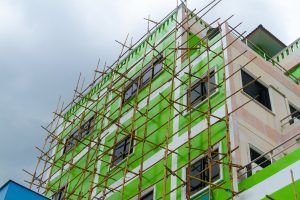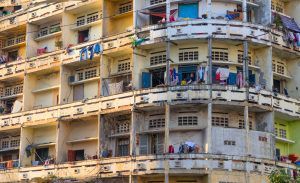Lifecycle Costing in Cambodia
Before moving to Cambodia real estate and founding IPS-Cambodia, my previous life involved pouring over detailed financial models to determine the most cost-effective outcome for Public Infrastructure projects – Hospitals, Schools, Universities, Defense Facilities etc. When these public assets are broken down to a micro level, and the service components removed, you are effectively left with a Building Asset with many moving parts. A significant part of my role was to ensure these buildings and those items within it operated at optimum efficiency and maintained full durability at the lowest possible cost.
Lifecycle Costing, also known as Whole of Life Costing (WOL) is about assessing the total cost of building ownership. It takes into account all the costs of acquiring, owning and disposing of a building. Why Cambodian property owners need to consider Lifecycle Costing (LC) is very simple – it’s a great way to minimize cost and maximize income from your property investment.
Given the relative level of sophistication of LC, I can understand single property owners dismissing the need for it, however, the principles apply whether the property is a 30sqm studio or a 20,000+ sqm commercial building. The key to understanding and implementing an LC model is to create an Asset Lifecycle Plan. An Asset Lifecycle Plan is a simple list of all assets within a structure and their detailed tasks and frequencies for maintenance, refurbishment, and replacement.
To create an Asset Lifecycle Plan start by listing all assets within your building including floor coverings, wall claddings, sanitary plumbing, electrical systems cooling systems etc. For a smaller property it’s relatively simple, the items would be floor tiles, internal and external painting, bathroom fixtures and equipment, kitchen fixtures and equipment and air-conditioning units.

By cleaning the walls every 12 months you remove the buildup of dirt and effectively increase the longevity of the paint, by the third and fourth years you might need to do some spot painting to refurbish high use areas i.e. around doorknobs and light switches.
Assuming normal wear and tear and the annual cleaning of the walls, the requirement to do a full repaint of the property should be increased from 3 years to every 5 years. Assuming an economic life of the building of 30 years (in the West we normally calculate this to be 25 years, in Indochina the reality is closer to 40).
Under the old regime, we repainted every 3 years and therefore we repainted 10 times during the economic life of the building. Adhering to our Asset Lifecycle Plan we cleaned every year and only repainted 6 times over the journey. The cost of the cleaning is negligible – a couple of dollars on detergent and a day a year in man hours.
We’re not just saving paint, we’re also ensuring that income derived from the building is maximized by reducing the downtime – painting is a disruptive task and almost always requires the property to be untenanted at that time.
The example above is a simple one but it highlights the opportunity for building owners to minimize their cost and maximize their income by adhering to the principles of Lifecycle Costing for their property.


Very interesting read. Thanks for sharing. I am currently helping my Cambodian friend to understand the importance of asset management. It is a fair challenge to bring this important point across.
Today I visited a boutique hotel in Siem Reap which claims to be three years young….It looks much, much older. I think there is room for improvement to educate Cambodian people in this matter.